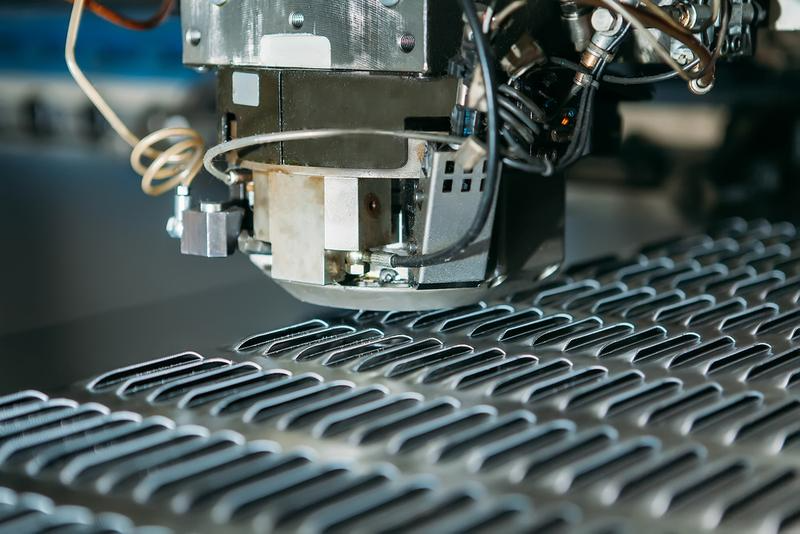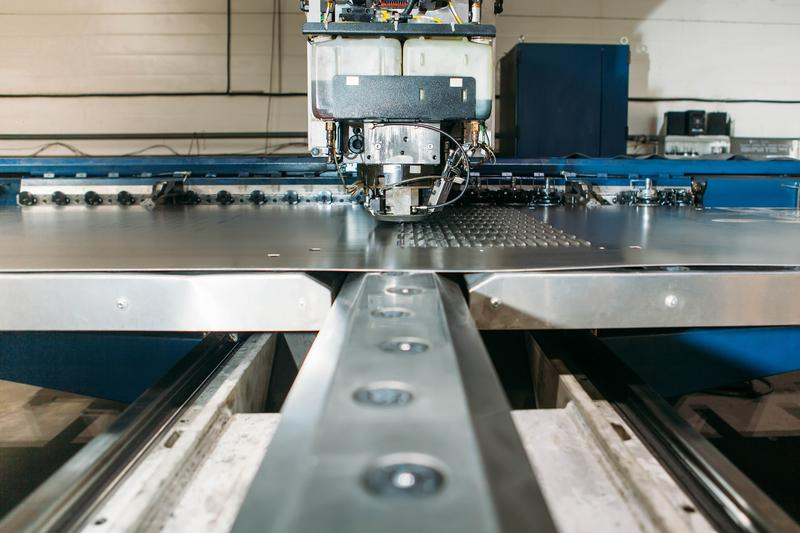Global Metal Stamping Market: Growth, Opportunities, and Applications in Furniture Hardware Stamping
Release time:
2025-03-06
According to a market report from MarketsandMarkets™, the global metal stamping market was valued at $213.8 billion in 2023 and is projected to reach $257.1 billion by 2028, growing at a CAGR of 3.7% from 2023-2028.
The growth in this market is driven by increased use of metal stamped components in construction, medical, and automotive industries, as well as rising demand for metal stamped parts in electrical and electronic products.
Industrial machinery represents the second-largest end-use sector for metal stamping. This industry frequently employs metal stamping equipment to produce various components essential for heavy machinery operation. Furniture hardware stamping applications within industrial machinery are numerous, including the manufacturing of gears, bearings, casings, and brackets made from stainless steel, high-strength steel, or aluminum. Metal stamping offers significant advantages in the industrial machinery sector, enabling rapid, cost-effective mass production of customized, high-precision, high-strength components including furniture hardware stamping parts.
Attractive Opportunities in the Metal Stamping Market
- The Asia-Pacific market growth is fueled by increasing disposable income, accelerating industrialization, and growing consumption across various end-use industries.
- Rising demand for lightweight quality materials in the Asia-Pacific region. High-quality precision parts needed for automotive and aviation industries, including furniture hardware stamping components, are key factors driving market growth.
- The Asia-Pacific metal stamping market is expected to reach $123 billion by 2028.
- The continuously growing demand for medical devices will provide favorable business opportunities for market participants in this sector, including those specializing in furniture hardware stamping.
Metal Stamping Market Dynamics

Driving Factors
Technological advancements and automation adoption are the main drivers of the metal stamping market. The market for furniture hardware stamping continues to expand because technological advancements in this field have improved production efficiency, reduced costs, and enhanced precision and accuracy.
Computer-controlled machines can produce complex parts quickly and effectively. By improving efficiency, reducing costs, and increasing productivity, automation technologies support the metal stamping industry, including furniture hardware stamping. They also help improve product consistency, as automated stamping machines can complete repetitive work tasks quickly and accurately, reducing manual labor.
Constraints
Fluctuations in raw material prices significantly constrain the development of the metal stamping market, affecting the profitability and competitiveness of metal stamping companies, including those in furniture hardware stamping. Metal stamping requires various raw materials (such as steel, aluminum, copper, and other metals) to produce stamped parts. When the costs of these raw materials increase, production costs increase accordingly. If metal stamping companies pass these increased costs on to customers, they may lose business to competitors with lower prices.
Opportunities

The application scope of metal stamped parts in the medical industry is continuously expanding. Metal stamping is widely used in the medical industry to produce precise, high-quality metal parts needed for medical devices, implant devices, surgical tools, and diagnostic equipment. The growth of the medical metal stamping market is driven by increasing demand for minimally invasive surgeries, an aging population, rising incidence of chronic diseases, and growing demand for medical implants. The trend toward miniaturization of medical devices is also driving demand for metal stamped parts in the medical industry, creating new avenues for furniture hardware stamping expertise to transfer to this growing sector.
Challenges
Lack of standardization presents challenges for manufacturers and customers. For example, due to the lack of standardized measures for the quality of stamped parts, manufacturers find it difficult to ensure consistent quality across different parts and orders. The absence of standardized quality control procedures can lead to inconsistent product quality, increased rejection rates, and ultimately reduced customer satisfaction, affecting the furniture hardware stamping sector as well.
Metal Stamping Market Ecosystem

By Process
The blanking process has the highest CAGR during the forecast period. Blanking is a metal stamping process used to cut metal sheets into desired shapes or sizes. It is highly favored for its advantages of high precision, speed, high material utilization, versatility, and ease of automation. Blanking minimizes waste, making it an economically efficient process for mass production of furniture hardware stamping components.
By Material
Steel has the highest CAGR in this forecast period. Steel is used in almost all construction and building processes due to its lightweight structure, cost-effectiveness, corrosion resistance, and energy efficiency. From surgical equipment to household goods, steel is used in almost all types of manufacturing and construction, including furniture hardware stamping. Steel products have a lifespan of approximately 40 years and are 100% recyclable. Since its magnetism remains unchanged, this metal can be continuously recycled. Recycled steel can serve as raw material for BF-BOF (Blast Furnace-Basic Oxygen Furnace) and EAF (Electric Arc Furnace) processes, resulting in various new steel products. These factors make steel the most popular material in the metal stamping industry, especially for furniture hardware stamping.
By Material Thickness

Materials with a thickness less than 0.4mm have the highest CAGR during the forecast period. Materials less than 0.4mm thick are known as "thin gauge materials" in the metal stamping field. When applied, thin gauge materials combine strength, flexibility, and precision, making them ideal for manufacturing complex parts with high tolerances and strict dimensional requirements. In addition to high strength and good flexibility, thin gauge materials are highly cost-effective because they require fewer raw materials, making them very suitable for large-scale production applications where cost-effectiveness is crucial, including many furniture hardware stamping applications.
By Press Type
Mechanical presses have the highest CAGR during the forecast period. Mechanical presses are versatile, efficient tools suitable for various metal stamping applications, including furniture hardware stamping. They are widely used in metal stamping for their efficiency and ability to apply enormous force to metal. Mechanical presses are typically used for various metal stamping operations such as blanking, punching, forming, pressing, embossing, and stamping, and are versatile, efficient machines capable of applying tremendous force to metal to shape it into specific dimensions and contours.
By End-Use Industry
The medical industry has the highest CAGR during the forecast period. Because medical procedures involving medical devices are very delicate, especially implantable medical devices, manufacturing results must be extremely precise, and the manufacturing attitude must be extremely cautious to prevent any contamination or defects. Therefore, the manufacture of medical devices must meet extremely high standards. Metal stamping, with its advantages of high precision, fast production speed, and low cost, is an attractive manufacturing method for mass production of medical parts. Parts manufactured through metal stamping include implants, connectors, surgical instruments, temperature probes, pump and motor parts, equipment housings, as well as sleeves, joints, fittings, and prosthetics. This expertise in precision manufacturing often crosses over to benefit the furniture hardware stamping sector.
Related News









